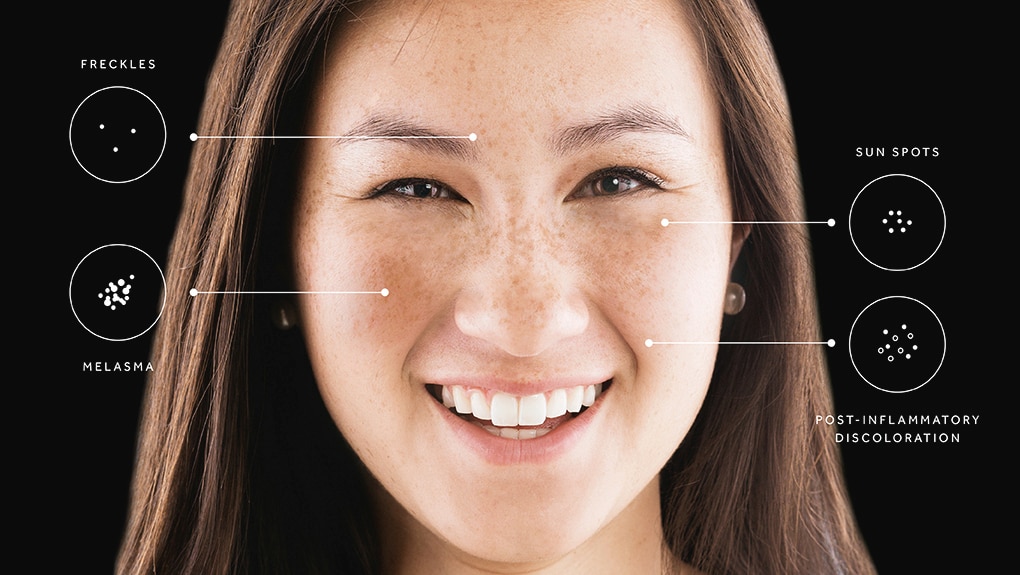Not all dark spots are created equal
That spot you’ve got there? It’s not what you think.
In Spots Free

All dark spots — small or big, brown or yellow — are the result of melanin over-production. Basically, your skin goes into overdrive pumping out pigment, but never evenly across the face, which is very normal so don’t freak out.
To figure out what you need to lessen the occurrence of such spots, you’ll need to know what you’re facing. Thankfully, there are only four groups of pigmentation spots.
Freckles
Usually hereditary, these are small flat brown or dark yellow spots that can appear alone or in clusters. Often they lend a cute, youthful appearance to the face, and as long you don’t see it spreading, you don’t need to worry too much.
Melasma
Melasma is one of the more extreme results of melanin over-production. It is extended pigmentation that covers entire areas of your face, mainly the cheekbones, forehead, bridge of the nose, upper lip and chin. And guess what? It’s most common among women aged 20 to 50. While sun exposure plays a part, hormonal changes during pregnancy, certain medicines, as well as a genetic predisposition, are big offenders. When hormones stabilize, the patches usually disappear.
Sun spots
Also known as solar lentigos, these spots tend to appear after excessive exposure to the sun without proper sunscreen and after-sun care. These spots will increase with age if not looked after as the effects of exposure to the sun accumulate with time.
Post-inflammatory discoloration
When the skin experiences an inflammatory wound, from cuts and abrasions or acne, its natural reaction is to produce more melanin. These spots tend to look different depending on the skin complexion, ranging from pink, purple, brown and black. These will naturally fade over time as the wound heals.

